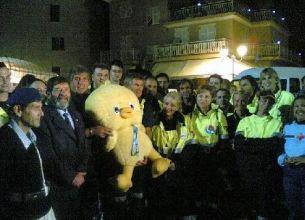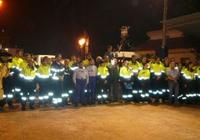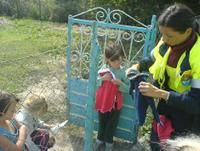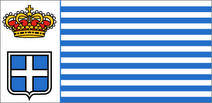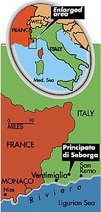South African Club Lunceon, October 23
The South African Club of the Cote d'Azur is having a luncheon on Sunday October 23rd in the fabled "Principality of Seborga". The host will be local personality Mark Dezzani, a long time resident of Seborga. Mark will be giving commentary, background and the history of the Principality during pre-lunch drinks. Nothing fancy or formal: just casual and good fun. The all inclusive Italian menu including wine and coffee is €17 per person with a reduced menu and price for children at €10. You don't have to be South African to attend, everyone is invited. To reserve telephone Hugh at 04 93 86 04 77 Portable: 06 75 93 90 93 or email: hughmitford@wanadoo.fr

